When it comes to gardening, there are a lot of different things that you need to think about. One of the most important decisions you’ll make is what to put on the bottom of your raised garden bed. This is an important decision because the material you choose will affect how well your plants grow. This blog post will discuss the different materials you can use for your raised garden bed!
Raised Garden Beds at a glance
Raised garden beds come with many advantages, including:
- Increased efficiency – Raised garden beds allow you to maximize your gardening space by planting more crops in less area. The walls of the raised bed can also act as a barrier that keeps soil and water from running away and out of the bed.
- Improved drainage – Because the soil is raised above ground level, it has better access to air and sunlight which allows for improved drainage. This means that your plants will not become waterlogged or struggle due to a lack of oxygen.
- Easy maintenance – Since the soil in a raised bed is contained within its walls, weeds are much easier to pull out since they don’t have access to the surrounding soil. This makes it easier to maintain your garden and keep it looking tidy.
- Greater accessibility – Raised beds are much easier to access than traditional in-ground gardens, which means that you don’t have to struggle with kneeling or bending over when tending to the plants.
- Improved soil quality – The walls of a raised bed act as a barrier that helps contain nutrient-rich soil, meaning your plants will get the best possible environment for growth and development.
- Increased yield – Since the beds are designed with efficient plant spacing and maximum sunlight exposure, you will be able to produce more crops in less space.
Overall, raised garden beds offer an array of advantages for both experienced and beginner gardeners alike. They require less maintenance, increase the efficiency of your garden, and provide improved soil quality for healthier plants. With all these benefits in mind, raised beds are a great way to get started with your gardening journey [1]!
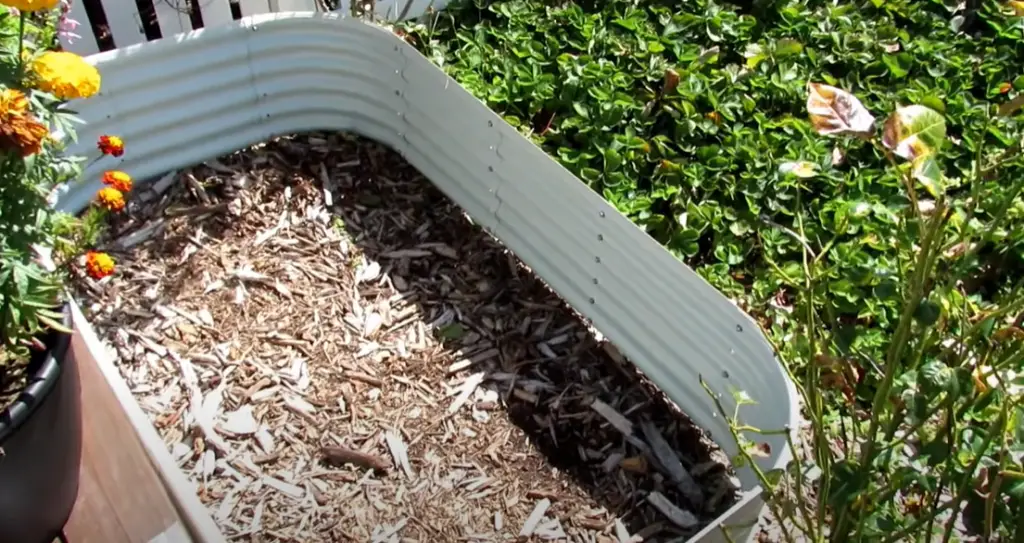
How to organize a Raised Garden Bed?
Organizing a raised garden bed is a great way to grow vegetables and herbs in your backyard. It is also an excellent way to save money since you can purchase the supplies for a fraction of what it would cost to purchase pre-made beds. Here are some steps you should take to organize and build a successful raised garden bed:
- Choose the right location – Start by choosing where you want your raised bed to be located. Make sure that it gets plenty of sunlight (at least 6 hours per day) and is not located in any area prone to flooding or soggy conditions.
- Prepare the soil – Depending on what type of soil you have (i.e., sandy, clay, etc.), you may need to add some compost and organic matter like mulch or peat moss before planting. This will help the plants absorb more nutrients and create better drainage for the bed.
- Choose your plants – Research what types of vegetables and herbs are best suited to your climate, as well as which varieties do best in raised beds. Make sure to select plants that have similar sunlight requirements, water needs, and soil type preferences to maximize growth potential.
- Install a trellis system – Trellising is an excellent way to maximize space in the garden and increase air circulation around the plants, making them less likely to get diseases or pests. You can make your trellises out of wood or metal, but if you don’t want to DIY it, there are also plenty of types of ready-made trellises that you can purchase.
- Water and fertilize regularly – Be sure to water your garden bed consistently (at least an inch per week during the growing season) and add fertilizer every few weeks or so to provide the necessary nutrients for optimum growth.
- Monitor pests and diseases – Keep an eye out for pest infestations or signs of disease in your garden bed, as these can quickly spread throughout the plants and ruin your harvest. If caught early enough, most problems can be treated with organic remedies like garlic sprays or neem oil; otherwise, contact a local extension office for assistance.
Following these steps will help ensure that your raised garden bed is a success. With proper care and maintenance, you can enjoy fresh-grown produce year after year [2]!
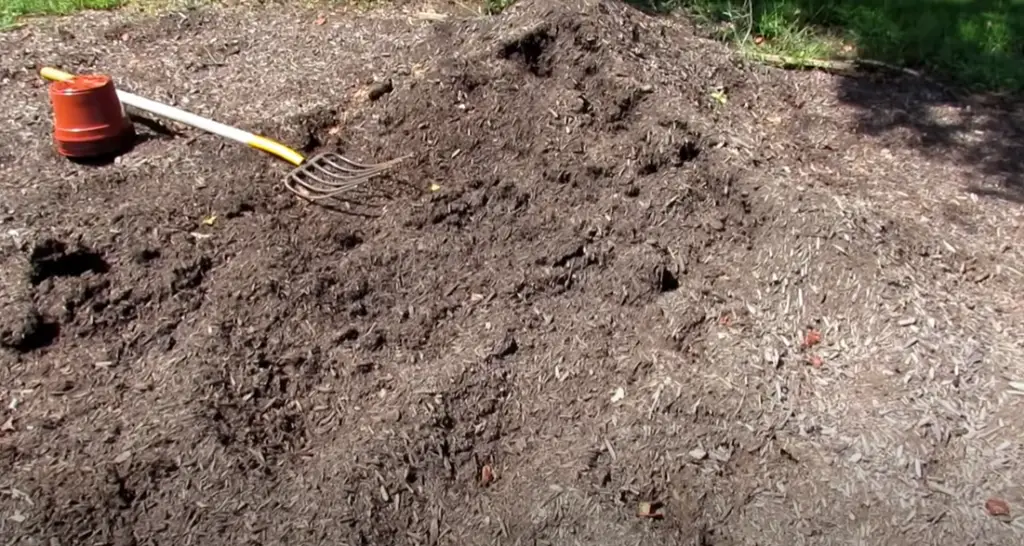
What to put at the bottom of elevated garden beds?
Hardware fabric
Hardware fabric is a great option for preventing soil erosion at the bottom of elevated garden beds. Hardware fabric comes in different sizes and textures and can be tailored to fit the size and shape of your particular bed. You can cut pieces to fit the dimensions of your raised bed, or you can buy it pre-cut in sections. It holds back soil from eroding away but also allows water to move through it so that drainage does not become an issue. This makes it easier for plants to take in nutrients from the soil. Many hardware fabrics are made from recycled materials, making them environmentally friendly as well. The fabric will need to be replaced periodically due to wear and tear, but this is often an easy job depending on how much soil needs to be replaced. In addition, hardware fabric can help to keep out weeds and pests, making it a great choice for those who want an easy way to protect their raised garden beds.
Food-grade Plastic Lining
Another option for preventing soil erosion at the bottom of raised beds is to use a food-grade plastic lining. This type of material is designed to be safe for vegetable gardens, as well as other types of edibles. The plastic helps reduce the amount of soil that washes away but also allows water and air to pass through, which gives plants the nutrients they need. It can also help keep out pests or weeds, making it a great choice for those looking for an easy way to protect their garden beds.
Mulch
Mulch is another great option for preventing soil erosion at the bottom of elevated garden beds. Mulching helps to keep the soil moist and can even provide some nutrients for plants as it breaks down over time. It also helps suppress weed growth and prevents soil from washing away in heavy storms or periods of high humidity. There are many types of mulch available that come in different colors and textures, so you can find one that will complement your existing garden design. Be sure to use a thicker layer of mulch if you live in an area that receives a lot of rainfall, as this will help to prevent soil erosion even more.
Newspaper
Newspaper is a great choice for preventing soil erosion in raised beds, as it can easily be layered and replaced when necessary. It helps to absorb moisture and prevent compaction of the soil, which in turn helps plants take in more nutrients. It can also help keep weeds down, as it prevents them from getting direct sunlight or access to water. However, newspapers can break down over time so they will need to be replaced every few years depending on how much rainfall your area receives.
Cardboard
Using cardboard can be a great way to help prevent soil erosion in raised beds. Cardboard absorbs moisture and helps keep the soil loose, which allows plants to access more nutrients. It also prevents weeds from accessing sunlight or water and keeps them from taking over your garden. However, like newspapers, the cardboard will need to be replaced every couple of years, depending on how much rainfall your area receives.
Landscape Fabric
Landscape fabric is a great option for preventing soil erosion at the bottom of elevated garden beds. It helps to keep soil in place, while also providing good drainage so that plants can access the nutrients they need. Landscape fabric is designed to last for several seasons before needing to be replaced, making it an ideal choice for those who want a long-lasting solution. It can also help keep weeds and pests away from your garden, making it even more beneficial.
Burlap
Burlap is also an excellent choice for preventing soil erosion in raised garden beds. It can act as a barrier to help keep the soil in place, while also allowing water and nutrients to pass through. Burlap may need to be replaced more frequently than other materials, but this is often an easy job depending on how much soil needs to be covered. This material can also help protect against weeds and pests, making it a great choice for those who want an easy way to keep their garden safe.
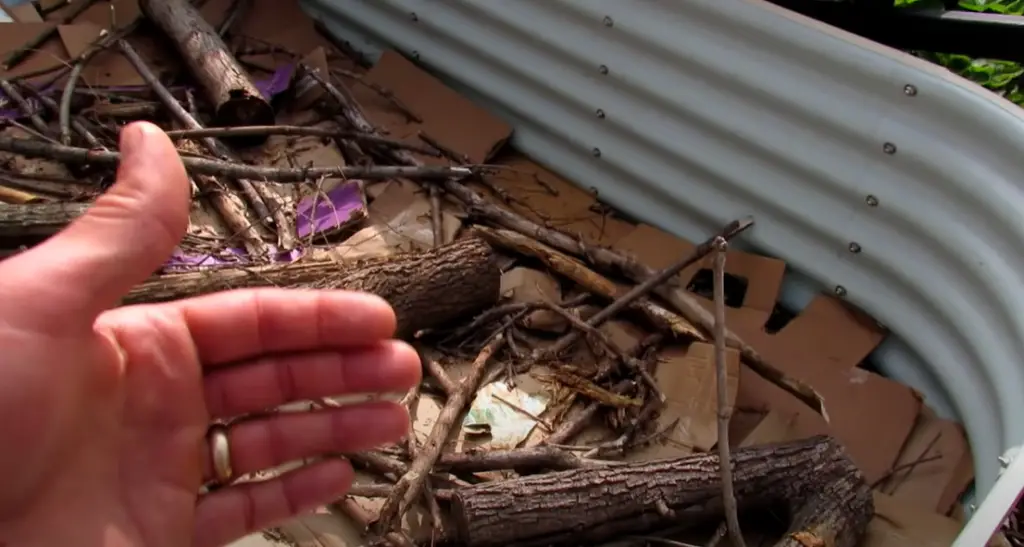
Leaves and Stones
Leaves and stones can also be used to help prevent soil erosion at the bottom of raised garden beds. Leaves act as natural mulch that helps keep moisture in the soil and adds nutrients over time. Stones can act as an additional barrier to help keep water from washing away the soil while allowing air and water to pass through. Both are great options for those who want natural solutions for protecting their garden beds.
Untreated lumber, wood chips, or sticks
Untreated lumber, wood chips, or sticks can also be used to help keep soil in place and prevent erosion. Lumber helps create a barrier that keeps the soil from washing away while allowing water and air to pass through. Wood chips act similarly but may need to be replaced more frequently than lumber. Sticks are also great for creating a barrier around the edges of raised garden beds and helping to keep out weeds and pests.
Grass clippings
Grass clippings can be a great choice for those who want to keep the soil in elevated garden beds from eroding. The clippings help to absorb moisture and prevent compaction of the soil, while also providing nutrients over time. It’s important to use grass clippings that haven’t been treated with herbicides or pesticides, as these chemicals can harm your plants.
Nothing
Using nothing is also an option for those who want to prevent soil erosion in raised garden beds. While this won’t protect against weeds or pests, it can be a great way to keep the soil from eroding and promote healthy plant growth. It’s important to remember that not using any sort of material will mean more maintenance is required, as you’ll need to water more often and add nutrients regularly. Each of these materials can be used alone or combined with others for maximum protection against soil erosion in raised garden beds. Depending on your needs and preferences, one might be better suited than another [3].
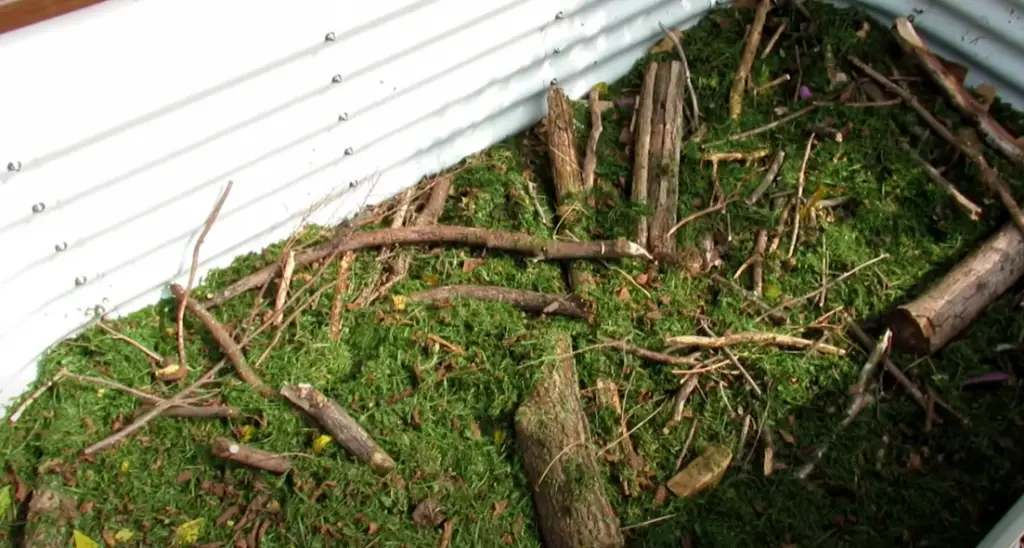
What Is the Recommended Soil Mix for Raised Garden Beds?
The best soil mix for raised garden beds is one that is rich in organic matter and provides good drainage. A general rule of thumb is to use a 3-2-1 mix, which consists of three parts compost, two parts topsoil, and one part perlite or other coarse material such as sand or vermiculite.
Compost adds beneficial bacteria and fungi to the soil while increasing its fertility and ability to hold water. Topsoil helps support root growth by providing nutrients and structure (such as micronutrients, minerals, and organic matter). Perlite or other course material helps improve drainage and aeration. It is important to choose high-quality soil components when creating a mix for raised garden beds, as this will provide the best environment for plant growth.
Additionally, be sure to use only composted materials that have been through the composting process. Uncomposted materials can contain weed seeds or pathogens that could damage your plants. Finally, always ensure you are using enough of each component when creating your raised bed soil mix. This will help keep it well-balanced and ensure proper planting success [4]!
How to make a Raised Garden Bed?
If you want to make a raised garden bed by yourself, you need to follow these steps:
Step 1: Decide the size of your bed. Measure out the size and shape that you want for your garden bed. Make sure to allow enough space for plants, fertilizer, soil, and mulch.
Step 2: Prepare the area where you will build your raised garden bed. Remove any existing sod and weeds in the area, then level off the ground as much as possible. If there are large bumps or holes, fill them with soil and tamp them down until they are even with the surrounding ground surface.
Step 3: Line your raised garden bed with plastic sheeting or landscape fabric. This will help prevent weed growth and retain moisture. Secure it along the edges with stakes or heavy stones if necessary.
Step 4: Build the borders of your raised bed. You can use wood, brick, stone, or any other type of material to form the edges. Make sure it’s sturdy and will not collapse easily.
Step 5: Fill the bed with soil. Mix in organic matter such as compost or manure for extra nutrients and moisture retention. You should also add a layer of mulch to suppress weed growth and help conserve moisture in the soil.
Step 6: Plant your plants! Take care when planting and make sure to space them appropriately so they have adequate room to grow. Give each plant enough water and fertilizer to ensure healthy growth throughout the season.
Step 7: Maintain your raised garden bed regularly by weeding, watering, and fertilizing as needed. You may also want to add mulch or compost periodically to keep the soil rich in nutrients. With proper care and maintenance, your raised garden bed will provide you with years of healthy, beautiful plants [5]!
FAQ
Do you put anything in the bottom of a raised garden bed?
Yes, several items can be used to line the bottom of a raised garden bed. These include cardboard, newspaper, wood chips, and compost. Each of these materials helps to protect the soil from compacting while also helping to retain moisture. Additionally, they provide an even layer for planting and will help to keep weeds at bay. For best results, make sure to begin with layers of cardboard or newspaper as a base before adding any other materials. This will help prevent weeds and give your plants a better chance of thriving. For more advice on how to create a successful raised garden bed, consult your local nursery or gardening expert!
What should I put under my raised bed?
It is important to put the material under your raised bed that will provide protection, and drainage and help the soil retain moisture. Common materials used include cardboard, newspaper, wood chips, and compost. Make sure to begin with layers of either cardboard or newspaper as a base before adding any other materials. This will help prevent weeds and give your plants a better chance of thriving. Additionally, it can be beneficial to add some additional soil amendments such as fertilizer or lime when you build the bed to ensure optimal growing conditions for your plants.
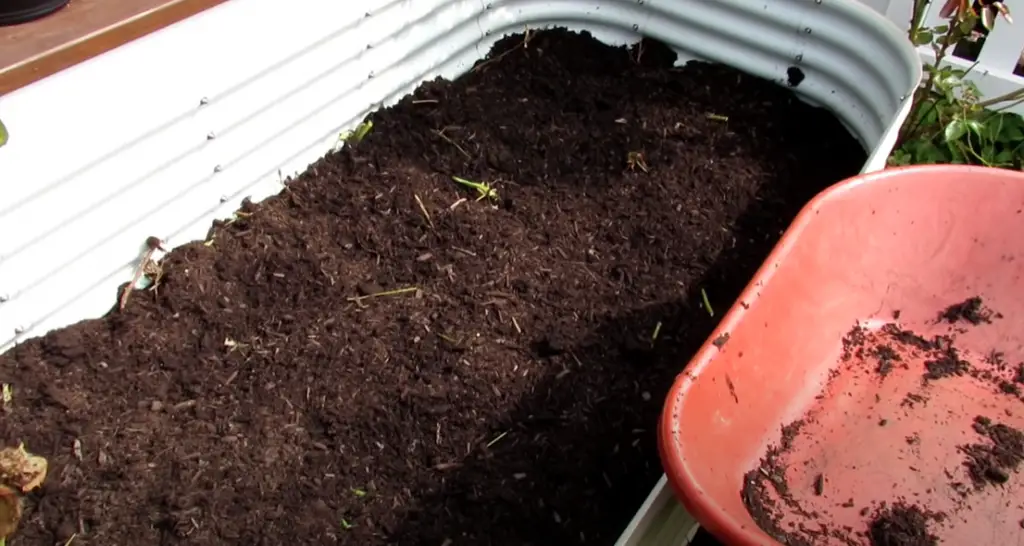
Should I put rocks in the bottom of my raised garden bed?
Rocks can be used in the bottom of a raised garden bed, but it is important to use them correctly. Rocks should only be used as drainage material and not as soil amendments. Additionally, make sure that you are using rocks that are small enough so they do not interfere with draining or plant growth. If you choose to use rocks in your raised garden bed, make sure to layer them on the bottom of the bed before adding any other soil materials to ensure proper drainage.
Are there other options for lining my raised garden bed?
In addition to the newspaper, cardboard, wood chips, compost, and rocks, there are many other options available for lining a raised garden bed. You can also use mulch or fabric sheeting like weed barrier cloth. These materials can also help to keep weeds at bay and promote drainage. Make sure to check with your local nursery or gardening expert for advice on which material is best for your particular situation.
What plants grow well in raised garden beds?
Raised garden beds are a great way to grow a variety of vegetables, herbs, and other plants. Some popular choices include tomatoes, peppers, lettuce, cucumbers, squash, beans, basil, rosemary, thyme, chives, and other herbs. Additionally, you can also add some ornamental plants such as petunias or marigolds for added color and texture!
What are some tips for maintaining a raised garden bed?
Maintaining a healthy, productive raised garden bed starts with proper preparation before planting. Make sure that you clear the area of debris and weeds, add soil amendments like fertilizer and lime when appropriate, and water regularly (but not too much!). Additionally, it is important to keep an eye out for weeds and pests. If you notice any issues, act quickly to address them. Finally, make sure to mulch the soil around your plants to help reduce water evaporation and retain moisture. Following these tips will help ensure a successful growing season!
Does a raised garden bed need drainage?
Yes, a raised garden bed does need drainage for optimal plant health and growth. The best way to ensure proper drainage is to use materials like cardboard, newspaper, wood chips, compost, rocks, or fabric sheeting at the bottom of the bed before adding any soil material. This will help to keep the soil from compacting and allow excess water to drain away from the plants’ roots. Additionally, make sure that your bed is not in an area that collects standing water or puddles after it rains as this can cause problems with root rot.

What kind of soil should I use in my raised garden bed?
It is important to use good-quality soil when building a raised garden bed. You want a mix that is nutrient-rich and will hold moisture but still allow for good drainage. A soil mix that is made up of equal parts compost, peat moss, and topsoil is a great option. Additionally, be sure to add some slow-release fertilizer when filling your bed to ensure that your plants are getting the nutrients they need to grow healthy and strong.
Can I grow vegetables in a raised garden bed?
Yes, you can grow vegetables in a raised garden bed! Vegetables such as tomatoes, peppers, lettuce, cucumbers, squash, beans, and other herbs all thrive in raised beds. Just make sure that you are providing them with the proper soil mix and enough water so they have the best chance of success.
Useful Video: Do Raised Beds Need a Bottom?
Conclusion
The bottom of a raised garden bed can be filled with a variety of materials, from wood chips and compost to gravel and sand. Choosing the right material largely depends on factors such as climate, soil type, water retention needs, and cost. If you want to ensure that your garden bed lasts for years to come, it is important to thoroughly research the material you choose and build your raised bed correctly. With the right material, a well-constructed raised garden bed can provide an ideal environment for growing vegetables and flowers for years to come.
References:
- https://www.gardenary.com/blog/the-complete-guide-to-raised-beds
- https://www.bobvila.com/slideshow/10-tips-for-planning-a-raised-garden-bed-52809
- https://www.floridayards.org/bottom-of-raised-garden-bed/
- https://savvygardening.com/the-best-soil-for-a-raised-garden-bed/
- https://www.almanac.com/content/how-build-raised-garden-bed










Leave a Reply
View Comments